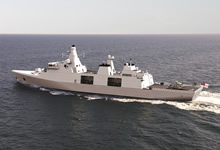Is 15 hulls "plenty enough"? Let's say that China invades Taiwan and Russia uses that opportunity to seize the Baltic States while the West is occupied in the Pacific. We have 15 combatants. Let's say 75% (11) are available for deployment. We contribute 2 to Allied TG's in the Pacific. We contribute another two to NATO naval forces in the Atlantic (SNMG1 and SNMG2). That leaves us with 7 combatants between two coasts to patrol our own maritime domain as well as support escort duties for supply ships delivering forces/equipment/munitions, etc. to both fronts.
Well let's just count the more significant combatants then (from
Wikipedia):
- 2 x Escort Carriers
- 2 x Light Cruisers
- 43 x Destroyers
- 69 x Frigates
- 123 x Corvettes
So that's 239 combatant vessels.
And let's be clear. If you read my posts it's not like I'm advocating for the RCN to get to anything like those numbers. I know it's an "apples to refrigerators" comparison in terms of technology, capability and level of national involvement between WW2 and a possible war between China/Russia and the West but it does illustrate that major naval operations do require mass as well as capability.
My proposal was to increase our manned combatant fleet from 15 to 24 by cutting back the CSCs from 15 to 12 and use the reduced manning there to partially offset the additional requirements of replacing the 12 x Kingston's with 12 x more capable Frigate/Corvette-type combatants.
Additionally we would want to increase our MPA fleet in support and invest in UAVs, USVs and UUVs to augment our manned fleets.
I'd also support the idea mentioned up by
@Colin Parkinson of possibly maintaining some of the Halifax-class ships as a Reserve Fleet. Say for example each of the three NSS shipyards take one (or two) of the Halifax-class ships when they are decommissioned and complete a major repair/refit to restore them to a usable condition. This could maintain work and workers at the yards between completion of their new builds and the next batch of replacement vessels.
The economic success of the collective "West" is founded on the free flow of goods around the World. And the vast majority of that trade is on the oceans. The threat posed by major powers that seek disrupt and control that free flow of goods is a direct threat to Canada and the rest of the West, so we are in effect "surrounded by adversaries" so long at they threaten the global trade that keeps us prosperous.






